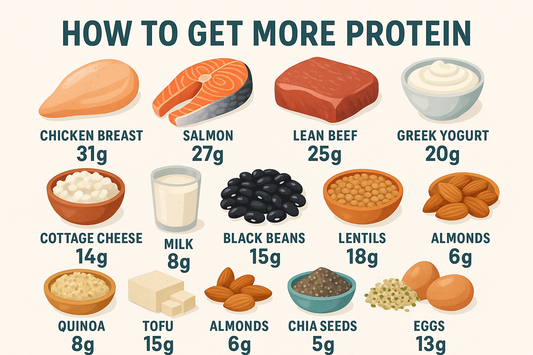Few athletic abilities capture the imagination quite like a towering vertical jump. Whether it's a thunderous dunk or a perfectly timed block, vertical leap has become synonymous with basketball excellence. But what constitutes a "typical" vertical jump, and how do different levels of players stack up?
The Vertical Jump Spectrum: From Playground to Pros
Vertical jump height serves as one of the clearest indicators of lower-body explosiveness—the ability to generate maximum force in minimal time. It's a pure measure of power, and the numbers vary dramatically based on training, genetics, and competitive level.
Recreational Players: The Starting Point
For casual basketball players who hit the court a few times a week without structured training, a vertical jump of 15–20 inches (38–50 cm) is typical. This might not sound impressive compared to professional athletes, but it's enough to get off the ground, contest shots, and enjoy the game. Many recreational players can touch the rim or get close, depending on their height, but rarely have the lift needed for dramatic in-game moments.
At this level, jumping ability often comes from natural athleticism rather than targeted training. These players might have decent leg strength from everyday activities and sports, but they haven't developed the specific explosive power that comes from dedicated jump training.
High School Athletes: Building Explosiveness
High school basketball players who train regularly typically achieve vertical jumps in the 20–25 inch range. This represents a significant improvement over recreational players and usually comes from a combination of strength training, competitive play, and natural athletic development during teenage years.
At this level, taller players can often dunk with some consistency, while guards might be able to touch the rim or get their wrists above it. These athletes have developed better jumping mechanics, stronger leg muscles, and improved coordination. They understand how to use their arms for momentum and have learned to generate force through their entire kinetic chain.
The variation at the high school level is substantial. Elite high school prospects might already be jumping 30+ inches, while others on the team might be closer to 18–20 inches. Position matters too—power forwards and centers who focus on strength might have lower verticals than guards who emphasize quickness and explosiveness.
College Players: Separating the Contenders
Division I college basketball players generally post vertical jumps between 25–32 inches, with many elite athletes in this range capable of impressive highlight-reel plays. At this level, vertical jump becomes a serious recruiting metric and a focus of training programs.
College strength and conditioning coaches implement sophisticated training protocols specifically designed to improve vertical leap. Players at this level combine natural athleticism with years of targeted development, resulting in jumps that allow for powerful dunks, chase-down blocks, and dominant rebounding.
NBA-Level Jumpers: Elite Explosiveness
When you reach the NBA, the numbers become truly remarkable. Professional basketball players routinely exceed 35 inches on their vertical jumps, with elite dunkers and athletes pushing past 40 inches and beyond.
To put this in perspective, a 40-inch vertical means a player can elevate their body more than three feet off the ground from a standing or running start. That's the difference between touching the rim and getting your entire forearm above it—the foundation for the spectacular dunks that dominate highlight reels.
Some of the most famous verticals in NBA history include Michael Jordan (48 inches, though this number is debated), Vince Carter (43 inches), Zach LaVine (46 inches), and current stars like Ja Morant (44 inches). These athletes represent the absolute peak of human jumping ability, combining perfect biomechanics with exceptional strength and power.
Standing vs. Running Vertical: An Important Distinction
It's crucial to understand that vertical jump measurements come in two varieties: standing vertical and running (or max) vertical. The standing vertical measures how high you can jump from a stationary position with no steps, while the running vertical allows for a one or two-step approach.
Most people can jump 4–8 inches higher with a running start compared to standing still. NBA combine results typically report both measurements, and the difference between them can reveal information about an athlete's ability to generate momentum and translate horizontal movement into vertical force.
When casual basketball discussions mention someone's vertical, they're usually referring to the running vertical—the more impressive number that applies to in-game situations like dunking or shot-blocking.
What Determines Your Vertical Jump?
Several physiological and biomechanical factors contribute to vertical jump height, and understanding them helps explain why some people seem to defy gravity while others struggle to get off the ground.
Lower body strength forms the foundation. Your quadriceps, hamstrings, glutes, and calves all work together to generate the force needed to propel your body upward. Stronger muscles can produce more force, translating directly to higher jumps. This is why squats, deadlifts, and leg presses feature prominently in programs designed to improve vertical leap.
Power and rate of force development matter even more than raw strength. You can be incredibly strong but still jump poorly if you can't generate force quickly. This is where explosive movements come into play—your muscles need to contract rapidly and powerfully to maximize jump height.
Core stability often gets overlooked but plays a critical role. Your core muscles transfer force from your lower body through your torso, and any energy lost to instability in this chain reduces your jump height. Strong abdominals, obliques, and lower back muscles help maintain rigidity during the jumping motion.
Flexibility and mobility allow for proper jumping mechanics. Limited ankle dorsiflexion or tight hip flexors can prevent you from achieving optimal positions during takeoff, reducing the force you can generate. Adequate flexibility ensures your joints can move through the full range of motion required for maximum jumping efficiency.
Technique and biomechanics separate trained jumpers from untrained ones. Proper arm swing timing, hip hinge mechanics, and the ability to pre-stretch muscles (the stretch-shortening cycle) can add several inches to a vertical jump without any increase in strength. Many athletes gain 2–4 inches simply by learning better jumping technique.
Body composition influences vertical jump as well. Excess body fat is essentially dead weight that your muscles must lift without contributing to force production. This is why lean athletes tend to jump higher than their heavier counterparts, even with similar strength levels.
Genetics ultimately set some boundaries. Factors like muscle fiber composition (fast-twitch vs. slow-twitch), tendon stiffness, and limb length all have genetic components that influence jumping ability. Some people are naturally predisposed to explosive movements, while others must work harder to achieve similar results.
How to Improve Your Vertical Jump
The good news is that nearly everyone can improve their vertical jump with proper training, regardless of starting point. Meaningful improvements of 4–8 inches are achievable for most athletes over a 12-week focused training program.
Strength training should emphasize compound movements that target the entire lower body. Squats, particularly front squats and back squats, build the foundational strength needed for powerful jumps. Deadlifts develop posterior chain strength in the hamstrings and glutes. Bulgarian split squats and lunges address single-leg strength and stability. Most programs should include these movements 2–3 times per week with progressively increasing loads.
Plyometric training develops the explosive power that directly translates to jumping ability. Box jumps, depth drops, bounding exercises, and hurdle hops train the stretch-shortening cycle and improve rate of force development. These exercises teach your muscles to generate maximum force in minimum time. However, plyometrics are demanding on the nervous system and joints, so they should be programmed carefully with adequate recovery.
Olympic lifting variations like power cleans and hang snatches are exceptional for developing total-body explosiveness. These movements require rapid force production and full-body coordination, making them ideal for athletes looking to improve vertical jump. Even simplified variations can provide significant benefits.
Core strengthening should go beyond basic crunches. Planks, dead bugs, Pallof presses, and anti-rotation exercises build the stability needed to transfer force efficiently during jumping. A strong, stable core ensures that the power generated by your legs isn't lost through excessive movement in your torso.
Jump-specific practice matters too. Simply practicing jumping—with proper form and maximum intent—helps develop the neural pathways and coordination required for optimal performance. Approach jumps, single-leg bounds, and repeated vertical jumps all have their place in a comprehensive program.
Adequate recovery cannot be overstated. Vertical jump training is neurologically and mechanically demanding. Your nervous system needs recovery time to adapt and improve. Most effective programs limit high-intensity jumping and plyometric work to 2–4 sessions per week, with at least 48 hours between intense sessions.
Realistic Expectations for Improvement
While genetics set some limits, most athletes can expect meaningful improvements with dedicated training. Beginners often see the fastest progress—adding 4–6 inches in their first few months of structured training isn't unusual. Intermediate athletes might gain 2–4 inches over a similar period, while advanced jumpers might fight for every additional inch.
The timeline matters too. Significant improvements typically require 8–12 weeks of consistent training. Neural adaptations come first, often within 3–4 weeks, followed by structural changes in muscle and tendon as training continues. The athletes who see the best results commit to long-term development rather than expecting overnight transformations.
The Bottom Line
Your vertical jump is a trainable skill that reflects explosive power, strength, and biomechanical efficiency. Whether you're a recreational player managing 15–20 inches or an elite athlete pushing 40+, understanding where you stand on the spectrum and what factors influence jumping ability helps you set realistic goals and design effective training.
The gap between recreational and professional jumpers is substantial, but it's built through years of dedicated training, not just genetic gifts. While you might never match the 40+ inch verticals of NBA superstars, meaningful improvement is within reach for nearly everyone willing to put in the work. Focus on building strength, developing power through plyometrics, and refining your technique—your vertical jump will follow.

















